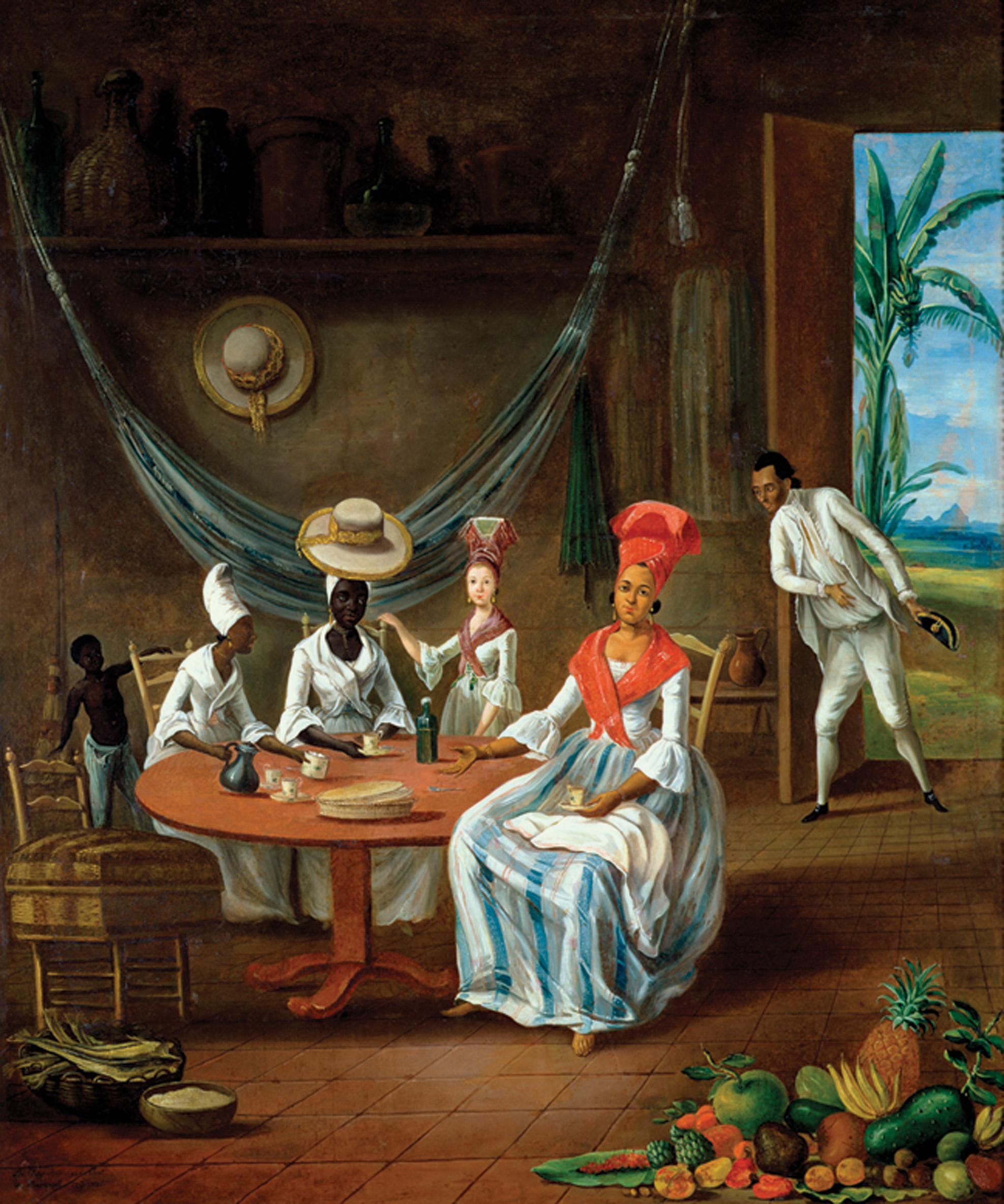We all know that just over 600 years ago, Italian explorer Christopher Columbus (Cristofero Colombo) petitioned the queen of Spain for three ships to sail west on the Atlantic Ocean in search of India. Instead, he landed on the island of Hispaniola, whose original native Taino name might have been Quizqueya, opens a new window (supposedly "Mother of all Lands").
From the moment of Columbus’s report, colonizers from across Europe began to settle up and down the New World, including the larger American continents and the many islands in the Caribbean Sea. Several of these colonizers would also bring millions of enslaved African people over the course of several hundred years. The onslaught of foreign bodies onto the already-inhabited islands led to countless deaths, from war, illness, or overpopulation and starvation—and in some cases the colonizers enslaved the original inhabitants, opens a new window.
Over the centuries, the appearance of the Caribbean islands would change, and those claiming power over them would as well. Some island nations would gain independence, often through violent revolution. Others would continue to live with foreign nations—sometimes a full ocean away—holding sovereignty over them.
Over the course of the twentieth century, the United States would become one of those sovereign nations; closer than Europe, but still far enough away that the islands under its control could easily become an afterthought. The draw of Imperialism, opens a new window was too strong for the US, especially as we continued to reap the benefits of Manifest Destiny. But one benefit to this change in power is the geographic movement that was now possible for Caribbean people.
American Citizens in and from the Caribbean
If you’ve seen West Side Story, you might have an inkling of the influx of Caribbean Americans making the decision to move to the continental US. In many cases, these were people who weren’t technically “immigrants”; they were US citizens taking the opportunity to move to a different place. Americans from Puerto Rico, The US Virgin Islands, St. Croix, St. Thomas, and St. John claim US citizenship whether they live on those islands or in the US.
Immigration from other Caribbean Nations
Whether from wealthier or poorer nations, many people from independent and sovereign nations have made the choice to move to the US, opens a new window, whether for careers, education, or simply a change of scene. Others have sought out differing perspectives on legal rights and social justice. As one of the nearest developed country with many different options for city, state, and both real and social climate, the United States marked a logical place to move.
Caribbean Heritage in the United States
Since long before the United States was a country, people from the Caribbean Islands have moved here to start families and legacies. If you’re a fan of either history or musicals, you know that Alexander Hamilton was born and raised in Nevis, a small island off the coast of Saint Kitts. Countless more people through the history of the United States, whether of European, African, Hispanic, or Indigenous descent, have made an impact on the US, small and large. From national legislature to music, opens a new window and food, the evolution of the Caribbean has influenced the United States for the better.
Now if only we could view the islands there as more than a combination of cruise destinations and dark islands full of black and brown dictators.
Want to read more? Check out these books and other resources about the Caribbean and Caribbean-American people.
Click on an island or island name to read about it in CultureGrams, opens a new window.
Try some of these documentary films and movies on Kanopy, opens a new window.
And how about some fun books by and about Caribbean-American people?


